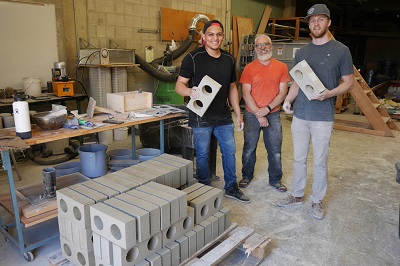 Friday, July 26, 2024
Friday, July 26, 2024  Friday, July 26, 2024
Friday, July 26, 2024 

A Washington State University team has developed a unique building system made from low-value construction waste that they hope can reduce waste while creating affordable housing.
A prototype structure featuring the drywall-based bricks will be displayed as part of the “Make/Do: A History of Creative Reuse” exhibit starting July 14 at the Washington State History Museum, 1911 Pacific Ave, Tacoma. The exhibit is focused on the history of creative recycling and re-use.
Building construction and demolition waste is a growing problem in the United States. In 2014, contractors disposed of 534 million tons of waste, a tripling since 2003. Drywall, also known as gypsum board or sheetrock, is a ubiquitous interior wall covering that is cost effective but wasteful to install. Building a 2,000 square-foot home generates more than a ton of drywall scrap.
Click here to sign-up and receive the Weekly Round Up in your inbox every Saturday
While there have been increasing efforts to recycle many construction materials, low-value drywall makes up nearly half of unrecycled construction waste. Furthermore, when it’s put into landfills, soil bacteria decompose the gypsum and produce a noxious gas.
There currently is a shortage of affordable housing in the United States. While high land prices are a significant factor, the cost of labor and building materials for housing are also a contributor.
The researchers, including Taiji Miyasaka, professor in the School of Design and Construction, David Drake, adjunct faculty in the School of Design and Construction, and Robert Richards, a professor in the School of Mechanical and Materials Engineering, began developing the drywall blocks in 2017 with a grant from the American Institute of Architects. They also recently received an Amazon Catalyst grant to move the project from laboratory scale to a demonstration structure.
Keep reading on the WSU Insider
